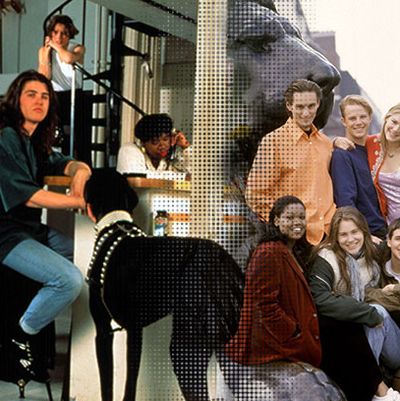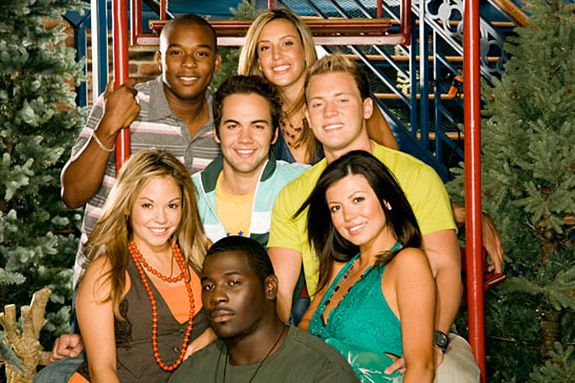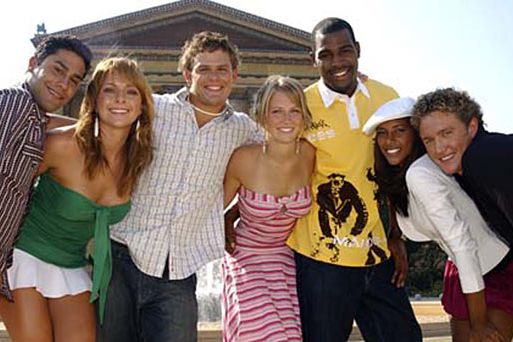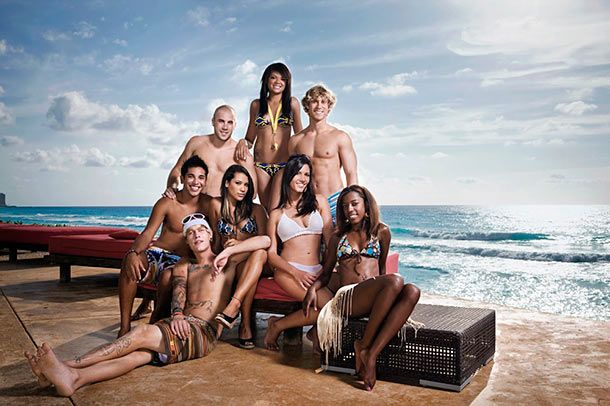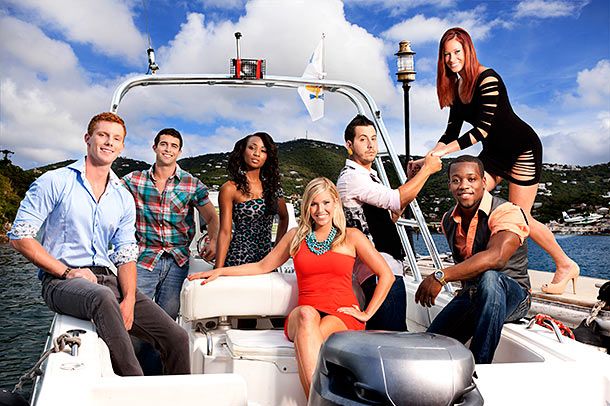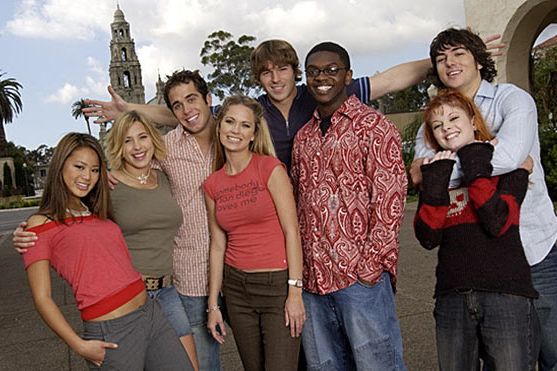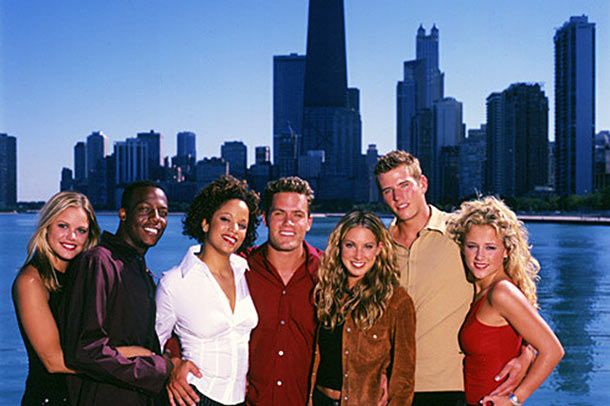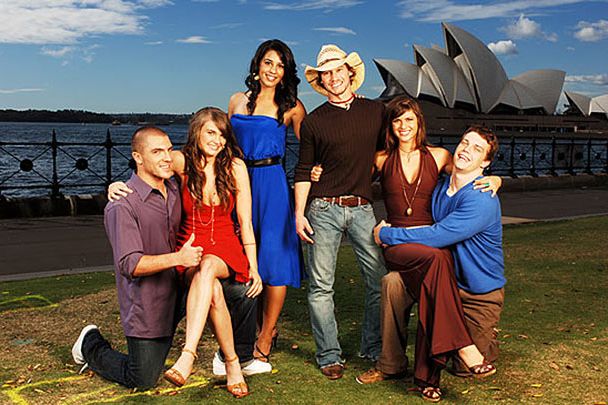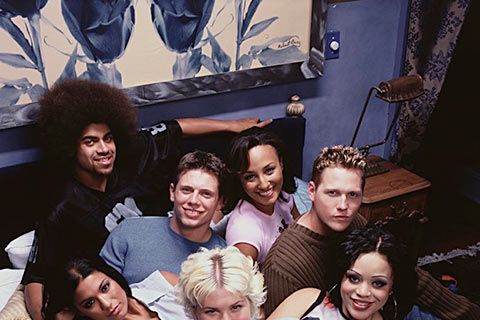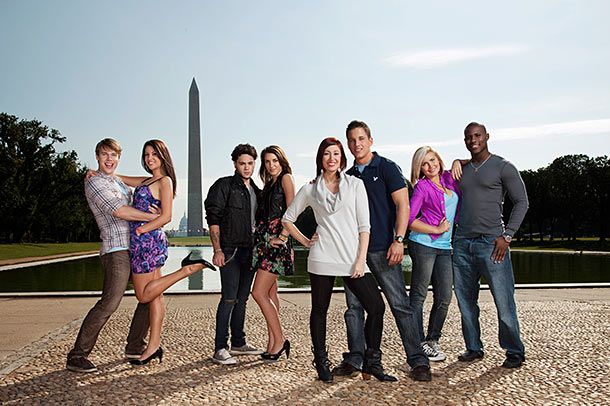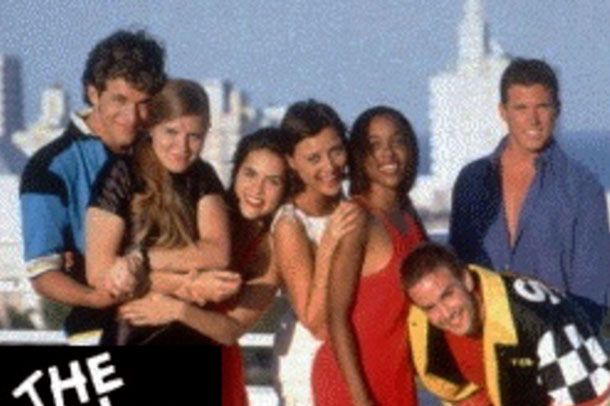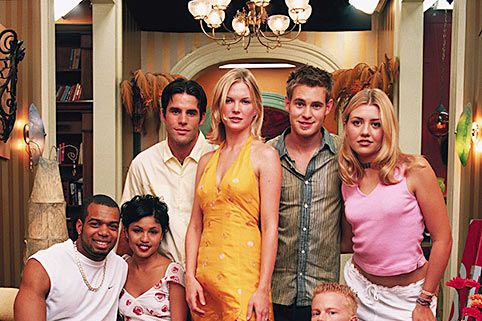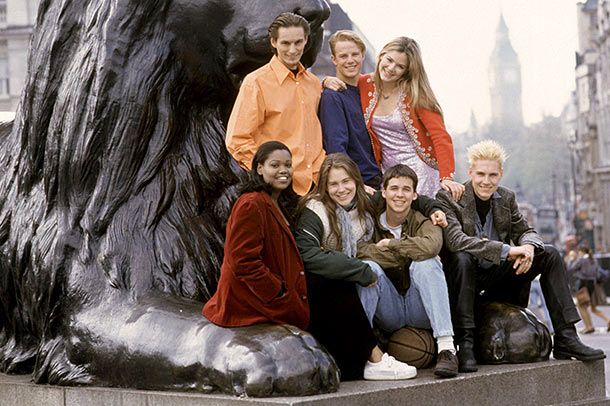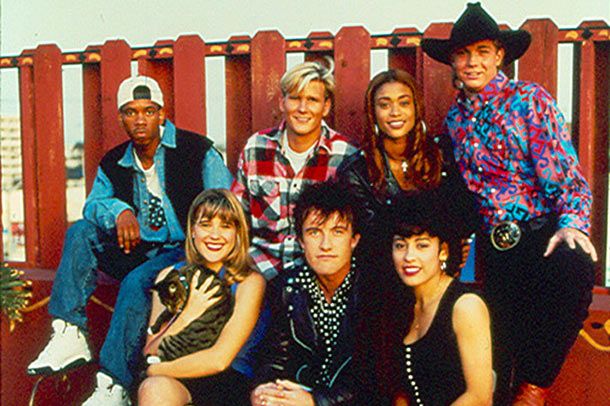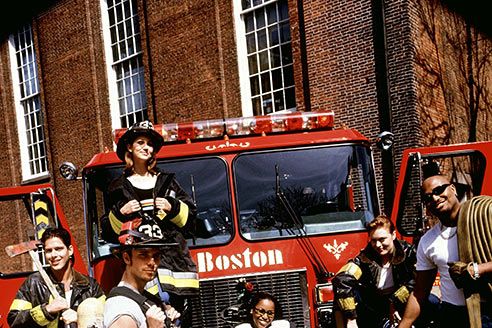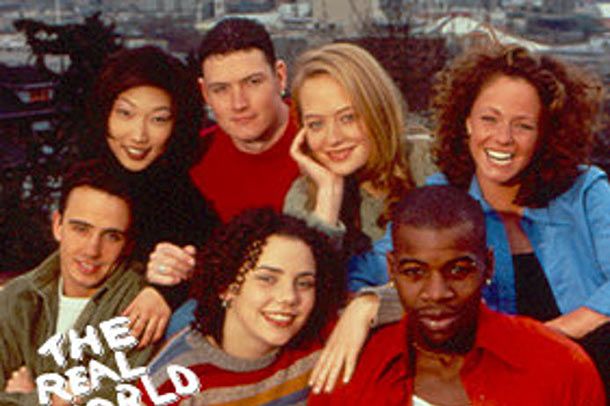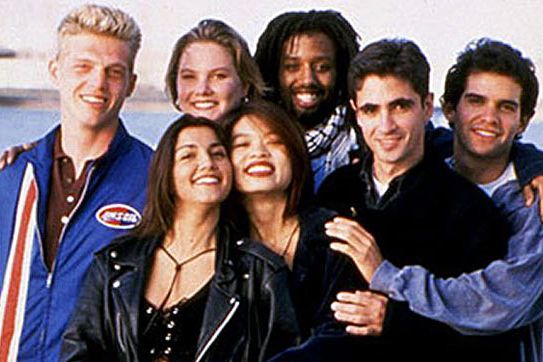Photo: MTV/Everret Collection
There have been 27 seasons of MTV’s The Real World, with number 28’s Portland season debuting tomorrow night: In a superhuman accomplishment that my future grandchildren will surely idolize me for, I have somehow watched them all. Somehow this show has stuck with me longer than all of my friendships. It’s almost as old (in years, not seasons) as my youngest sibling. What began as something that could at least pass the laugh test as a social experiment has evolved (devolved — let’s be honest) to something that is both a relic and emblematic of MTV’s binge-drink/hookup/fight wheelhouse. Still, I’ve found something fascinating in almost every season, watching twentysomethings barely formed as human beings thrown together and left to bounce off one another and approximate social behavior.
So, after 27 seasons, which one ranks the very best? The very worst? And everywhere in between? Time to get crazy, everybody. Or is it just time to get real?
I said I’ve watched every season of The Real World, and I meant it. But there was one season that was bad enough that it drove me to the unthinkable: I abandoned it partway through. The subsequent season (Sydney, which we’ll get to) pulled me back, but ugh: Denver. It wasn’t just the unlikable cast — I’d certainly weathered those before and since — it was how boringly terrible they were. Even the most loathsome casts (Miami, Hawaii, Austin, for Pete’s sake) build friendships, animosities, some kind of compelling reason to watch them be terrible. The Denver cast members felt like they barely ever met each other. The Colie-Alex-Jenn “triangle” was barely interesting enough to them. Musclebound gay dude Davis used the N-word in an argument with Tyrie and it still managed to be a nonevent.
MVP: Brooke, because if the cast wasn’t going to deliver anything in the way of interpersonal narratives, at least Brooke was there to be legitimately crazy and
make faces like this.
This season broke from tradition by featuring not one but two gay male cast members. (It can’t be a quota if there are two!) Willie was out from the break but turned out to be a twinky little snooze. Karamo was supposed to be the groundbreaker: a hulking black guy, atypical for the series’ classic depiction of gayness. But his semi-closeted nature kept him from revealing too much, and he never really came out of his shell. And nobody else was there to fill the interesting-roomie vacuum.
MVP: The problem is that there wasn’t one. Everybody fit into the classic types: Landon and Shavonda were the tempestuous couple; Sarah likably promiscuous; MJ the boring straight white male. Really, you have to give MVP to Melanie, as aloof and sour as she was, who ended up hating all of her roommates and then got scabies. I know you’re incredibly surprised that the season that prominently featured scabies is ranking so low.
The black cloud that hangs over this season existed even before alumnus Joey Kovar died of a drug overdose in 2012. The ostensible “theme” of this season was that these cast members were ambitious to Make It in showbiz, but none of their hopes and dreams distinguished themselves from 70 percent of all Real World cast members. Brianna wanted to be a singer. Sarah wanted to be a … reporter? Maybe? We did get one differentiating wrinkle, as the focus on social-climbing allowed the show to be open about the incestuous network of Real World alumni hovering about in L.A. Will dated Janelle from the Key West cast as a sort of nod toward upward scenester mobility, which was sad but also fascinating from an anthropological perspective. Joey’s drug problems and the house’s general rejection of vain problem child Greg (the series’ first-ever cast member elected by the fans) led to their exits and two comparatively boring replacements.
MVP: Former American Idol auditioner Brianna seemed like she’d be the most fun hang; Greg caused the most conflict; womanizing D.J. Will and good-girl striver Sarah drove the most story, but the former was dead behind the eyes and the latter a complainer; Joey is the natural answer, but it feels ghoulish to revel in his intoxicated behavior (violent/aggressive intoxicated, not fun/goofy intoxicated) considering what happened to him. Let’s pull a baseball hall of fame here and say no one wins.
When beginning this project, I made a self-imposed ruling that Challenge participation must have no influence on these rankings. But here’s where it faces its toughest test. Key West alumni Paula, Tyler, and Johnny Bananas went on to become horrifying/fantastic presences on the Challenge, while Svetlana’s sole Challenge appearance saw her reach the finals despite no obvious athletic prowess. Unfortunately, their original appearances on this season were pretty unpleasant. The season was dominated by Svetlana’s repetitive Russian princess routine, which would constantly flare up and annoy her castmates, who were some of the franchise’s more forgettable (Jose? Janelle? Zach?). Paula’s situation was slightly more problematic, as she underwent a season-long breakdown that had most certainly begun well before she was cast. The specific alchemy for enjoying The Real World has always included watching messed-up people act out their damage, but with Paula, you felt like you were watching something … clinical?
MVP: I’ll get pelted with rotten fruit for this, but: Tyler. He was a nightmare of a person, a catty gay who would kiki with Svetlana and then turn on her viciously. But without the Tyler element, the season would have been been 27 weeks of fratty Johnny poking at high-maintenance Svetlana, like some kind of terrible supersize sitcom.
Cancun felt like even more of a valley wedged in between two seasons (Brooklyn and D.C.) that had more on their minds than simple drunken partying. For as much grief as the first Las Vegas season gets for plunging the series into “The Binge-Drinking Hookup World” territory, Cancun was the season where that template hit its low point. Presumably by design. You don’t set a season in Cancun in the springtime and have the kids work at Student City if you’re not looking to make a season-long Spring Break Gone Wild. And so it was, with the odd character beat or serious social issue (Ayiiia’s self-harm; C.J.’s LOL-worthy NFL tryout) drowned out by partying, girl-on-girl hookups, and a guest-starring stint that launched LMFAO into our collective consciousness. And despite a lot of really extreme behavior, particularly from the near-sociopathic Joey, none of the eight roommates was the least bit memorable. Months later, MTV would premiere Jersey Shore, rendering this season even more irrelevant.
MVP: Derek, more by process of elimination than anything else. As a gay guy, I have to admit to crossing my fingers every season in anticipation of whatever nightmare representative of my people MTV is offering up. (To be fair, MTV offers up nightmare representatives of everyone’s people, but I do get defensive). Anyway, Derek was one of the more relatively drama-free gay dudes in the history of the show, which didn’t make him the most compelling but definitely the most likable.
Very possibly the least likable cast in show history. At best, you could just tolerate low-level irritants like Rachel (Iraq War vet with a chip on her shoulder) and Nehemiah (would-be smooth operator with a chip on his shoulder). At worst, you had the insufferable Wes, who was seemingly created in a research lab beneath the lacrosse frat at Arizona State to be the most infuriatingly obnoxious person in history. The Austin season really drew an arrow to the fact that, at this point in the series, The Real World had abandoned the concept of tailoring their seasons to their locations. Gone were the days that the casts were a mix of locals and transplants, exploring the eccentricities of their host city: What a cool change of pace it might’ve been to cast people here who represented the Austin/hipster/SXSW ethos. But no, we got the usual malcontents and sorority/frat children, with blue-collar Masshole Danny and flirty blonde Melinda swallowing up the season with their
remarkably boring courtship. Including his non-relationship stuff as well, a good 90 percent of the drama this season was Danny-focused, as he got seriously injured in a bar fight and then weeks later learned of his mother’s death. Unfortunately, Danny wasn’t at all sympathetic when he wasn’t suffering, which muted any possible emotional connection for the viewers.
MVP: You’d think it would be Lacey, who provided season-long side-eye at everything her jerk roommates ever did, but she was pretty much a pill, too. I have a feeling Melinda would have been a pretty compelling character if not for the Danny vortex.
Ooof. This was an unpleasant season, without a ton to invest in. The dominant story line was that of Ryan, the 21-year-old hairstylist whose vehement denial of his own gayness was only one of the dozens of conflicts he had with his roommates. In keeping with the trends of the last several seasons, Ryan’s behavior trended uncomfortably close to the psychiatrically diagnosable line, which certainly takes some of the fun out of watching a character that the show’s producers clearly wanted to turn into the next Puck. Ryan’s oxygen-sucking monopolization of the season — there doesn’t seem to be much to talk about after you get to the part where Preston (the out gay guy who constantly clashed with Ryan) got so angry he peed on Ryan’s toothbrush — didn’t leave much room for anybody else. You had the white-trash romance between recovering-addict Knight and abuse-survivor Jemmye, which only went to prove that late-seasons Real World could turn any personal trauma into an excuse for drunken hookups. You had McKenzie, the blackout drunk, who … (there is no end to that sentence). You had a lot of low-liers who are really hard to remember today (Ashlee? Eric? Sahar?).
MVP: Ryan was basically the only contender this season, but if you’re looking for someone to like the best, it was actually Jemmye. Beneath that Deep South accent and co-dependent-in-training relationship with Knight, she was quite open and empathetic.
The most recent season (and fifth to take place outside the United States) threatened to take up right where Cancun left off, as a glorified booze cruise on land. And in many ways, it was. Eventually, the interpersonal intrigue of damaged, drunk, and/or secretly rageful persons reaches a point of diminishing returns. For a while, the relationship between doormatty Laura and wolf-in-sheep’s-clothing Trey was captivating on an elemental level. Who wouldn’t get into the drama of warning this girl away from a bad-boyfriend scenario? Similarly, ex-addict Brandon’s arc — wherein he essentially goes through the reverse of every addiction/recovery arc you’ve ever seen, ultimately debunking the idea that he shouldn’t take drink or take drugs — is dark but somewhat novel. What ultimately makes this season a notch better than Cancun or Philadelphia is that enough of the roommates seem like recognizable human beings. Marie may be a blackout drunk, but she’s the blackout drunk you went to high school with. LaToya and Swift are immature and argumentative, but not so far gone that you can’t relate a small bit. That’s all we’re asking from The Real World at this point, for some sliver of recognizability in these party monsters.
MVP: Marie was loud, crude, and looked and behaved like Ke$ha, but there was a hard edge to her that felt genuine, and she managed to slice and dice her roommates’ actions quite effectively.
Photo: Ian Spanier Photography/? Ian Spanier Photography 2012, All Rights Reserved
It is incredibly strange/uncomfortable to talk about the first San Diego season in retrospect for two unavoidable and intertwined reasons: (1) Frankie was unquestionably the most irritating cast member, overly defensive and paranoid and condescending and “too punk rock” to stay in the house for a full season; and (2) Frankie has since passed away from cystic fibrosis. There’s no getting around either halves of the Frankie Conundrum. It feels terrible to speak ill of the dead, yet speaking ill of Frankie is basically the only reason to talk about the San Diego season. Well, okay, we could talk about how the postshow film and television success of
Jamie Chung puts her right up there with London’s Jacinda Barrett in terms of postshow acting success … (but Jamie a virtual nonentity in San Diego. The other train wreck of the S.D. season, Robin, is probably best viewed through the lens of her Challenge appearances, where each season would bring either sober, endearing Robin or drunk, nightmare Robin, and it was almost impossible to predict which was coming. But in San Diego, she was in total nightmare mode throughout. The Brad/Cameran “relationship” was a pale, pale facsimile of similar housemate romances, and … see? See how desperate I am not to talk about Frankie? I’m talking about Brad and Cameran.
MVP: Randy, one of the more purely likable stoner-goofs ever to appear on the show.
Given the way that earlier seasons of The Real World were plugged into the world and times around them, you might’ve expected the season being filmed on and after 9/11 to have been colored some by the events. But that moment — the cast getting a rare
at-home TV set to watch the coverage — was but a blip on the season-long radar. The real story of this season was how many people seemingly were not interested in being on The Real World in any genuine way. Gay model Chris began as closed-off and protective of his image and stayed that way throughout. Kyle was the straight white male who was at the center of most of the season’s story lines, but he was very clearly interested in only presenting a highly pruned version of himself, even while stringing along highly string-along-able Keri. (Kyle went on to co-star on Days of Our Lives for a couple years and is probably in my top five of most loathed Real Worlders.) The two least closed-off members were Aneesa and Tonya, the former an exhibitionist lesbian given to all sorts of dramatics, the latter a budding sociopath and former foster kid who hated basically everything and everyone.
MVP: Cara shared Sarah Jessica Parker’s early-seasons-SATC hair, which is maybe why her man-hopping has always held Carrie Bradshaw–like undertones to me. But she made a decent case for serial dating without ugly labels like “promiscuous.” She had no interest in playing the virgin or the whore, and I liked that.
Not a season for everybody’s tastes, and the one reason why many people would like it — the television debut of Challenge beast C.T. — is pretty far down on my list. I just enjoyed everybody in the cast except him. Even Ace, an Eddie Haskell type straight out of Georgia who used his boyish charm to
wrap all the girls around his finger. Even Adam, with his cringe-inducing confessional poetics. Even Leah and her Long Island Princess routine. I honestly could not tell you what they did while in Paris, except that they maybe worked for a tour-book company and that CT got drunk one night and threatened to beat up Adam for being a pussy. That’s really about it. For all his Challenge infamy, CT’s stint in Paris consisted mostly of him being hectored by the girls for nonspecific bad behavior.
MVP: It would be pretty unfair for me to say Simon simply because he was the most attractive and relatively together gay guy they have ever put on a Real World show. Every season, there’s one cast member who decides he or she is over it and spends the bulk of the time away from the roommates — seeing the city, making friends, starting side relationships. These are almost always the best people but the worst TV. Simon was all that plus cute and Irish, and okay fine, it’s Ace. The MVP is Ace.
By this point in the series run, the casting of damaged personalities was more the rule than the exception. It may not make you feel good to watch twentysomethings work out deep-seated emotional issues in the most unsafe environment possible — but you never know when they’ll do something crazy/watchable! The participation of ex-juvie resident Adam, who exhibited
overtly aggressive/violent tendencies when drunk, felt more dangerous than anything should be on this show. He was bounced in episode six (you wonder if the producers had any expectation that he would last the whole season), at which point the bulk of the season’s drama was shifted to Dustin’s gay-for-pay pornography past. As trashy as it was in concept, the Dustin story line was honestly pretty compelling, offering the first truly new twist on the show’s recurring conversation about homophobia in many, many years. By this point, acceptance of gay cast mates was pretty normalized, but watching the roommates wrestle with feelings of shock/revulsion/betrayal over Dustin’s past was, while dismaying, undoubtedly “real.” All of a sudden, these kids raised on vague notions of “acceptance” of desexualized portrayals of gayness on TV were confronted with the real thing. Seeing ostensible “good guy” Mike make the spiteful argument that Dustin should not be allowed inside a school to talk to children was probably the most radical piece of social commentary The Real World had aired since Pedro Zamora days.
MVP: Dustin, easily. Not necessarily the most likable, but a surprisingly satisfying onion once you got to peeling away those layers.
Photo: ?? Ian Spanier Photograpy 2011
Denver drove me away from the series, but Sydney pulled me back. Sometimes a good feud can drive a whole season (Pedro vs. Puck being the best example), and while Tricia and Parisa’s battles never quite evolved far past the “I don’t like you and your stupid face” level, sometimes that’s all it takes, isn’t it? Tricia was a shallow, petty Mean Girl. Parisa was a superior know-it-all. The house took turns taking sides, often ending up in the “neither” camp, and Tricia’s ultimate ouster was oh-so-satisfying. The nice thing about Sydney was that beyond that central conflict lay some real characters. Dunbar’s impotent rage was at once unsettling and hilarious (though, seriously, that man will murder someone someday, and we’re all going to feel awful about it). Isaac was a bizarre, likable stoner-type. Cohutta the evolution of L.A. 1’s Jon Brennan (in this case, “evolution” is a synonym for “now with abs”). Kellyanne and Shauvon … were drunk idiots, sure, but Kellyanne was kind of hilarious.
MVP: Parisa. Every season seems to have a humorless pill, and I suppose Parisa fit that bill in Sydney. But Parisa managed to win me over by basically voicing my armchair-roommate opinion on every discussion/argument/fight that happened in the house. Sometimes you just find a kindred spirit in the house who hates all the things about the people on the show that you do.
Of all the very recent Real Worlds, the second San Diego season was the most compelling but also the most genuinely unsettling. The volatile mix of personalities of Frank (recently out homosexual, drinking problem, anger problem, narcissistic personality problem) and Zach (regressively narrow-minded, anger problem, narcissistic personality problem) was an ugly thing to watch, but it was also kind of darkly fascinating to get a look at the increasingly rare breed of homophobic twentysomethings in the MTV demographic. (This got even weirder when Zach’s small-mindedness was matched by blonde personality-vacuum Ashley.) Then there was Sam — super androgynous, kind of innocently enthusiastic, little-brother-in-a-girl package — who would bounce off the two of these enemies at odd angles. Every week, I expected a
hate crime, and amid the usual drinking and yelling, I got more confused about millennial attitudes toward masculinity and sexuality. Second only to Hawaii in terms of the show’s most compelling car wrecks.
MVP: Sam. What a weird, wonderful little thing she was. Like all the Justin Bieber lesbian jokes in the universe went out and took human form as a butch girl with inexhaustible reserves of swagger.
Photo: Ian Spanier Photography/? Ian Spanier Photography 2011
On balance, the second New York season was full of a lot of dull characters. Malik was nice and handsome and didn’t do a blessed thing. Kevin was a cancer survivor and even struck up an early flirtation with Lori, but he backed off quickly and then just acted like a low-level dick to her. Rachel was wide-eyed in the big city and often felt bullied by the other roommates, so that was something. Aspiring singer Lori and makeup enthusiast Nicole each had their moments where their idiosyncrasies would get on their roommates’ nerves, but honestly, it was pretty tame. The major saving grace that puts Back to New York on this list is Mike and Coral. Mike and Coral are worth a lot. Mike and Coral hated each other. His boastful, fratty (yet somehow open-hearted?) ignorance; her hair-trigger temper and stubborn sense of judgment. On a lesser show, they’d have fallen in love. Instead, they sparred for the better part of a season before becoming the best of friends.
MVP: It’s a tough call, but despite Mike’s Horatio Alger–like success story, wherein
four minutes of him goofing around with a WWE belt led to his ascent to the heights of WWE stardom, I’m giving it to Coral. Quick and cutting and always right. My kinda people.
Photo: Len Irish/? Corbis. All Rights Reserved.
After several seasons chasing increasingly shallow shenanigans, the Brooklyn season (which featured eight strangers, not seven) managed to be about something again. Enlisted Army man Ryan brought a dose of reality and provided the kind of multifaceted character the series is often lacking. Similarly, transgendered Katelynn was never quite so easily lovable; she was argumentative and selfish and kind of dumb. It made her a frustrating person to watch but also an understandable and watchable character. The other roommates had their moments, though too many of them — the princessy Devin, lunkheaded aspiring model Scott, secret
rage-monster JD, bow-tied uptight dandy Chet — quested for shallow fame via MTV-engineered connections in a way that repelled any kind of viewer empathy. Also, extra points for filming a stone’s throw from my apartment, though I can see why that might not factor in your final score.
MVP: Sarah certainly got the lion’s share of attention, and the intrigue surrounding her broken relationship with her father was worth a conversation or two, but it’s gotta be Ryan. It’s too bad he couldn’t have been transplanted to an earlier season where his odd personality would have been challenged and explored more by his housemates.
Churned out as a quick response to the postelection Obama era of good feelings, the D.C. season was less concerned with politics as an end — really, only bisexual-okay-I-mean-gay Mike had any kind of political aspirations to speak of — but more about the general hope-stravaganza that supposedly permeated the youth culture back then. This season felt like it attained a classic mix of Real World characters. Ashley the drama queen, Josh the too-cool womanizer, Ty the too-aggressive egomaniac, Callie the sweet striver, Erika the secret crazy. Emily and Ty’s odd courtship took up a lot of air, especially in the early episodes. Emily was a sporty, competitive girl, which made her awesome, but it made the recurring aggression within her and Ty’s relationship hard to measure. Even more compelling was the panda-hat-wearing Andrew, whose steadfast refusal to drop his goofball façade and interact in any genuine way with his roommates was either impressive (almost like he tried out for the show on a dare) or unsettling (there were moments where something seriously dark was lurking beneath).
MVP: The aforementioned Mike, who went through an endearingly retro gay awakening that managed to showcase what a genuinely good kid he was and also reminded viewers that just because popular culture has considered the coming-out story old hat doesn’t mean that kids aren’t still doing it every day.
Well, here it is. The season where everything died. But on pure landmark value, it deserves its top ten spot. As someone who has found value in the hedonistic post-Vegas seasons, I don’t hold as much against it, though obviously one look at the rest of the top ten will tell you where my loyalties lie. But Vegas had its moments. Trishelle and Steven were three notches away from leaving Vegas to embark on a Natural Born Killers–style white-trash crime spree to pay for the child they thank God did not end up conceiving. Alton and Irulan were one of those couples that hook up early on and end up isolating themselves from everybody else all season while caught up in their own drama, so that was no fun. Frank (the nice guy who always finished last, until reemerging as a swinger when MTV reunited the cast several years later) and Arissa (outwardly bitchy but misunderstood) were the likable ones, depending on who you asked.
MVP: Brynn, quite improbably given what a sloppy mess she was in the first episode. By the time it got to the part where she was
throwing forks at Steven (thus forcing him to defend himself to the other roommates in the most obnoxious way possible), Brynn was a clear favorite.
Informal polls taken among friends and on social media have told me that people who no longer watch The Real World stopped at one of three easily identifiable exit ramps: Las Vegas, when the whole thing became Elimidate; Hawaii (probably because of Matt and Kaia, but we’ll get to those monsters eventually); and Miami, which was the series’ first big turning point: This was the first season everybody had to get a job together. The aimlessness and isolating career paths of the London and San Francisco kids proved to be too much for the Bunim-Murray cameras to track, and they needed to get everybody up in each other’s business (no pun intended) much more frequently. This got off to a rocky start with the Miami seven having to actually start a business from the ground up. Because what could be more in the wheelhouse of fame-seeking twentysomethings than shareholders’ concerns and marketing prospectuses? Terrible idea. Good idea: everything else this season. Miami featured a threesome in the shower (Mike, Melissa, and Unidentified Cocktail Waitress), wee Joe’s giant Amazon of a girlfriend, Dan and Melissa’s epic stairwell freak-out (which, lest we forget, was about Melissa opening an envelope that did not have her name on it,
“you stupid bitch!”), Cynthia uttering the first-ever recorded instance of “I’m not here to make friends,” and roller-skating Sarah, the worst roommate in history, who brought home random neighborhood children for no reason.
MVP: Flora, the true dawn of the modern reality TV star. She was argumentative, dramatic, irrational, vain, a little funny, willing to string multiple boyfriends along, and even more willing to climb through a window to get a peek at the shower threesomes happening therein.
There was a lot of dead air in the season’s second half, but it’s forgivable because there was so much else to recommend it. Honestly, when your most boring character is a beautiful and likable blonde who goes on to marry actor Scott Wolf, you’ve done a pretty good job casting. Sure, there was himbo Jamie and quietly religious Matt, but there was virtually no time to pay attention to them when you had David laying down freestyle flows basically every other day. Who among us can’t hum a few bars of “Come on Be My Baby Tonight”? Julie the skateboarding Mormon rebel was obviously a breakout character, probably the most ideal candidate for the Sheltered Girl Learns Things archetype since her season-one namesake. Similarly, angel-faced Danny and his blurry-faced military boyfriend are as indelible as almost any other gay story line in the series, short of Pedro.
MVP: Oh, Melissa. Such a cutup you were. The great part about Melissa is that she could throw a week’s worth of side-eye at David and make you feel like she would absolutely be the person in the house you would hang out with … and then turn right around and
throw a chair and dance atop a bar with dollar-bill pasties on her boobs and make you immediately second-guess all your people-judging skills. Also, props to her for
exposing Julie for the rat that she was on one of the Challenges.
Photo: Len Irish/? Corbis. All Rights Reserved.
London got a lot of criticism for being boring. For episodes upon episodes of aimless twentysomethings lounging about their Notting Hill castle, picking up dog crap. In hindsight, the show is a complete breath of fresh air. With the bar-hopping of the last decade’s worth of seasons having grown much more monotonous than the London sloth ever was, watching these low-key roommates actually talk to and learn about one another is almost thrilling. It’s also one of the most purely likable casts. At the time, Neil’s Brit-punk superiority chafed and race-car driver Mike’s frat-boy routine grew wearisome, but pull up an episode on Hulu and see how well-intentioned and relatable these kids are. Jacinda probably comes closest to being objectionable — she’s kind of a bully, kind of a flake,
decent prankster, though — but there’s a core of decency in this group that was rare even in the early seasons.
MVP: Sharon. Wonderful, sweet, chatty-as-hell Sharon. She took a lot of (usually good-hearted) grief from her roommates and responded with a smile. She also nearly died of strep (or something) and had a really beautiful singing voice and may well be the best human being to ever be on this show.
Photo: Copyright ? ?MTV/courtesy Everett / Everett Collection
Like in the first New Orleans season, things got relatively dull in the second half of The Real World’s second season, when comedian David and way-too-mature-for-this-and-finally-realized it-and-split sheriff (CK) Irene were replaced with Perch frontman
Glen and cleverly-T-shirted lesbian Beth A. But such a first half! The entire David/Tami/Beth yanked-bedspread affair that eventually got David booted managed to be fascinating, provocative, and wildly entertaining (“
IT WASN’T NOT FUNNY!”), and is, deservedly, one of the most widely remembered moments in show history. Everything in L.A. was ramped up from season one, for better or worse. Jon Brennan clung to his roots tighter than New York’s Julie did. Aaron was more overtly himbo-ish than Eric Nies. Tami was more confrontational. Dominic was more of a cool hipster. Clearly, “types” were already beginning to coalesce.
MVP: Tami, without a doubt. Do you realize how much she got up to in one season of television? She accused Jon of being a racist, was the center of the storm that got David kicked out, had her jaw wired shut, took classes at ITT Tech (!), went on the game show Studs, and worked with AIDS patients until it got too hard to watch them die, which would be too real for basically any cast post-1995. Most significantly, she went through the process of getting an abortion, a story line that seems unfathomable for an MTV reality show today.
To find many people to like in the Hawaii season, you really have to squint. You have to see past Ruthie’s drinking problem to the messed-up girl underneath who keeps making mistakes. You have to take Amaya’s drama and neediness with a grain of salt and see that she’s just a girl with a crush so powerful that she can’t act remotely cool about it, and who among us hasn’t been there? You have to tap into your inner Marquise de Merteuil to understand Justin’s dedication to destroying all his roommates on their trip to India. Just don’t ask me to defend white-knight wannabe Matt and crunchy, frequently topless poet Kaia, though. Smug and superior and the worst. The great thing about Hawaii is that everybody is bad in really compelling ways. Well, except for Teck. Not that much to unpack about a camera hog with aspirations toward becoming an MTV VJ.
MVP: How about Colin, the fake-nerd who amiably hosted the casting special, was “surprisingly” cast, showed up on move-in day with fifteen extra pounds of muscle, and proceeded to emotionally abuse Amaya for months. What happened there?
I couldn’t quite place Boston as the greatest season, but I do think it’s my favorite. There are simply no dead spots in the cast. Sean Duffy’s post-house life as a conservative congressman from Wisconsin can’t fully diminish what a fun, gregarious party guy he was in the house. Syrus was the womanizer you could enjoy without a ton of guilt. Elka was a good-girl-gone-incrementally-less-good (she smoked!). Kameelah was a shit-stirrer extraordinaire. Genesis was a giant ball of drama: a lesbian who fell in love with a drag queen and plastered the house with obnoxious “be better” quotes pointed at her roommates. (Props to Genesis and Kameelah for
this bracingly honest moment, talking to kids about ingrained homophobia.) Even low-key spoken-word poet Jason had that girlfriend (Timber!) who seemed a stiff breeze away from a total breakdown at all times. That MTV had the bright idea to have these guys work with children at an after-school program was a terrible idea that didn’t even prove all that necessary, what with the characters they were working with. Then again …
MVP: Montana. Without a doubt. If you were casting a Real World Hall of Fame house, Montana would get in on the first ballot. You’d think merely letting a grade-schooler steal a sip of wine while at work at a daycare center and on camera would be enough. She also two-timed her boyfriend and got screamed at (repeatedly) on the phone for her trouble. (“WHORE!”) None of that would have put her over the top, though, if she wasn’t simultaneously super fun and likeable. She contained multitudes, our Montana. White and red and rosé.
Photo: Copyright ? ?MTV/courtesy Everett / Everett Collection
You can’t mess with the original. I will still mention Julie’s “Do you sell drugs?” faux pas to Heather every single time I see a beeper on TV (on the History channel, mostly). Eric Nies was my first reality-TV crush. Heather’s
“Could you get the phone?” in the opening credits plays in my head on a constant loop. It’s an old-hat observation, but at this point, the show truly felt like an experiment, with young people from vastly different corners of America thrust together to make friends, but more important, to interact on an intensely personal level. This cast — well, everybody but too-cool rock-band guy Andre, I’d say — delivered that and set the template for sure. The only thing holding it back is that the prototype would later be sharpened and perfected on a couple of later seasons.
MVP: Julie, without a doubt. I don’t think the series ever achieves true liftoff without her onscreen. She mixed it up right from the get-go — with Heather, regarding the beeper comment; with Kevin later in their streetside “black people cannot be racist” fight — but was 100 percent genuinely eager to expand her horizons via this project. I can’t imagine one other cast member in the history of the show who could go spend a night with a homeless friend and have it not come across as self-serving.
Photo: Courtesy Everett Collection
Of the top two seasons, one feels more important, the other more entertaining. This is the latter. Not that everything was fun, exactly. The season’s most indelible image — the emotionally interesting Stephen, having just been outed, chases down the departing Irene, opens her car door, and
slaps her in the face — isn’t one to relish. But it was emblematic of the ultimate clash between privacy (Irene retreating to hers; Stephen thrashing to retain the last shred of his) and publicity that defined the season. The second most indelible image was the highly emotional argument
(“I LOVE YOU! IT KILLS ME!”) between David and his girlfriend, the recently fired Real World producer Kira, in a car they thought was out of the way of cameras. (Ah, the trusty mike packs.) Fun-time Lindsay had to deal with the news of a friend’s suicide, puncturing her bubble. Lot of heavy stuff, but a lot of fun too. Lindsay and Janet and their smokers’ rasps were as enjoyable a pair of girlfriends as the show ever had. Irene was genuinely funny, in a weird way, until her Lyme disease/exit story line took over. David and Rebecca’s quasi-courtship was sweet. But man, that slap.
MVP: I refuse to give this to Stephen on principle; I still hold a bit of a grudge against the other roommates for not kicking him out after he hit Irene. So this goes to David, a bundle of odd affectations and hard/soft contradictions, wrapped up in a Boston accent and the sickest body. He loved hard, man. YOU DON’T EVEN KNOW!
By the time the third season aired, the mere novelty of the “seven strangers picked to live in a house, stop being polite, and start getting real” concept had already begun to wane. The question of what the show was going to do with that novelty was up next. The San Francisco season set up two provocative story lines. One was sociologically curious, seeing what happened when AIDS activist Pedro and young Republican Rachel were thrown into a house together and left to sort out their differences. The second was chaos-as-entertainment, with bike messenger and snot rocketeer Puck wreaking havoc and setting the template for all future I-gotta-be-me reality-TV troublemakers. But then these stories smashed into each other: Puck flirted with and tormented Rachel, while clashing with Pedro until the roommates
ultimately kicked him out. (The utter deliciousness of MTV intro-ing that segment with Lisa Loeb’s “Stay” is everything to love about The Real World in one three-second music cue.) But while Puck became the brand name for reality dickishness, Pedro’s impact went much deeper. For as much as AIDS awareness was everywhere in the early nineties, the show gave most young viewers the closest experience they’d ever had with an AIDS patient. Suddenly, that process of learning from different types of people via close-quarters cohabitation was being shared with the audience. This was The Real World in its most ideal incarnation.
MVP: For all the Pedro-versus-Puck combativeness, the most fascinating character was future two-time View co-host runner-up Rachel Campos. She was so entrenched in her right-wing world at the beginning, and we got to see her open up to people — to Pedro, to Judd, to meek little Cory — without necessarily abandoning her politics.
